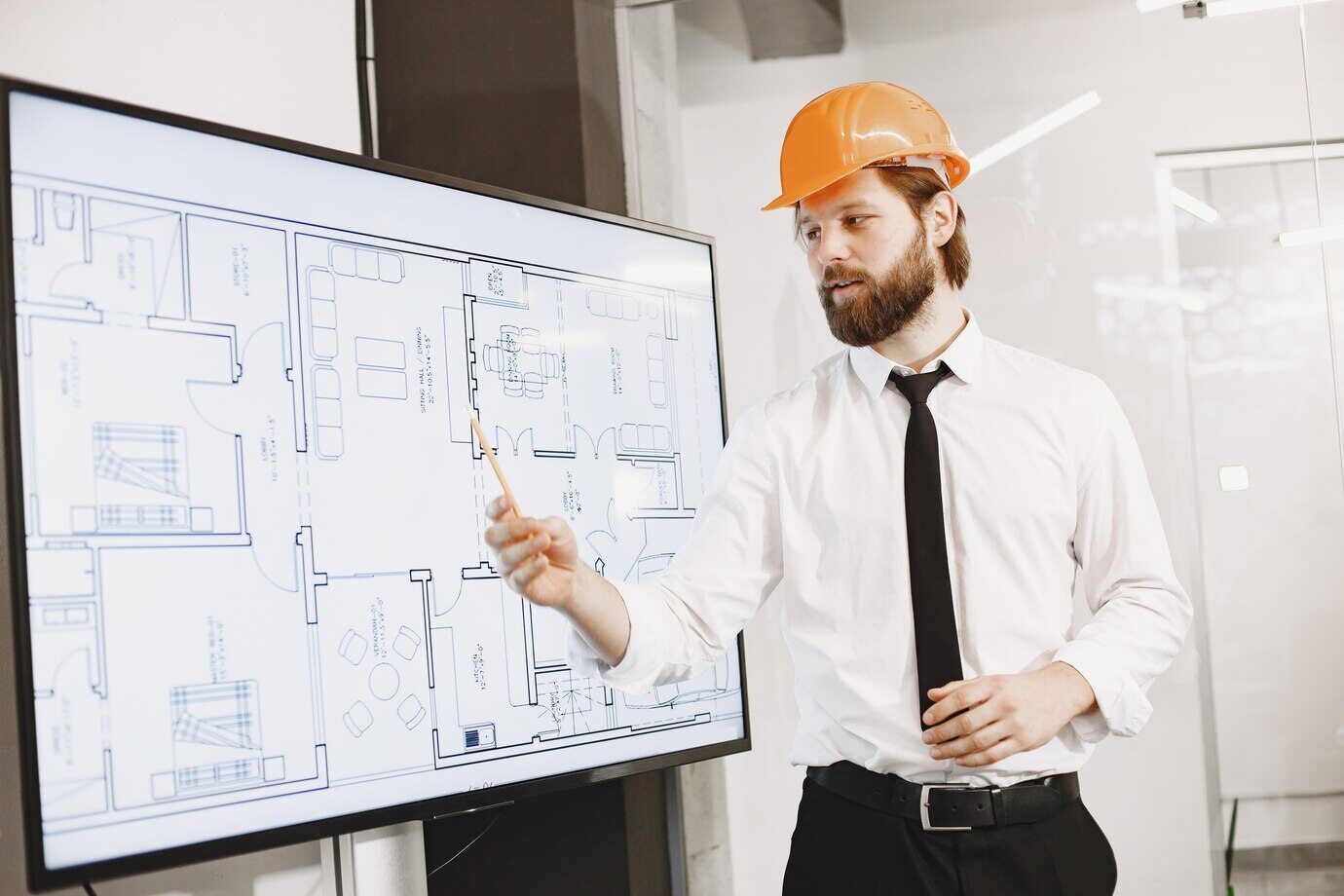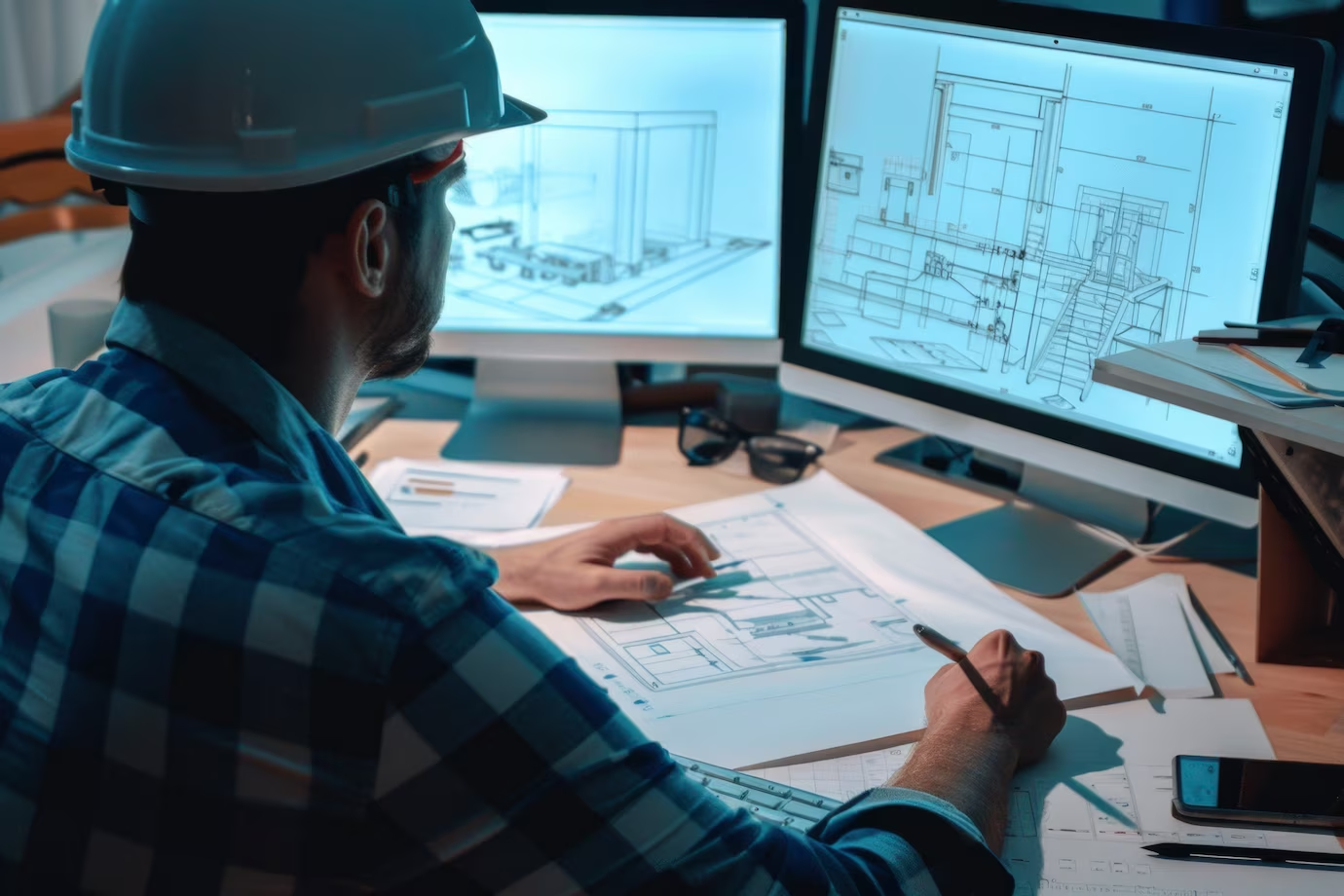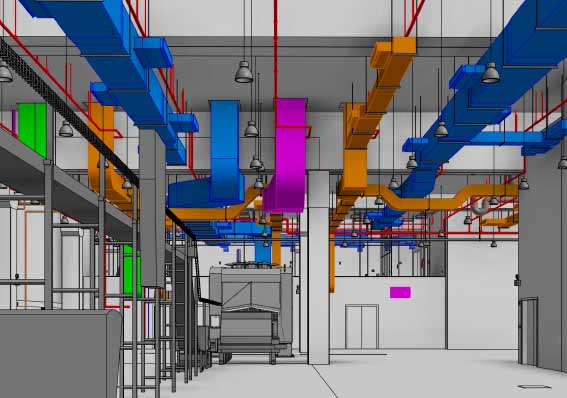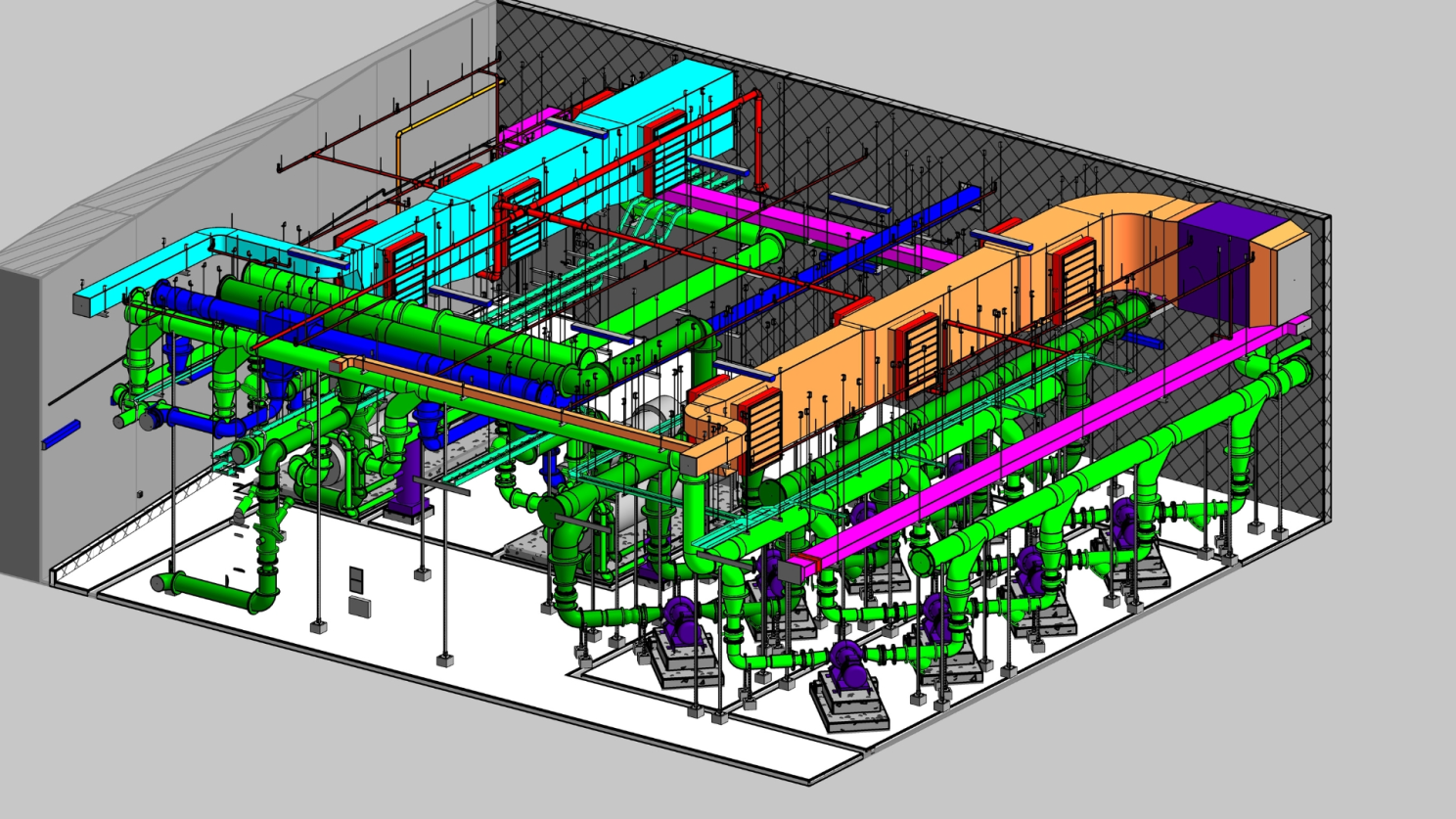
Let's face it: the engineering and construction industries are changing fast. For bim mechanical designers, this means moving beyond 2D drawings and working in a more collaborative, tech-savvy environment powered by Building Information Modeling (BIM). This isn't just about keeping up with the times; it's about securing a future where you can grow your career, feel more secure in your job, and earn a better income.
In this blog, we're going to explore why mechanical designers should think about making the switch to BIM roles. We'll look at the challenges they're facing, how BIM can lead to better career opportunities, and what skills and training are needed to make this transition smooth.
Not too long ago, BIM mechanical designers had a pretty straightforward job: create 2D or 3D drawings using CAD software, hand them over, and move on. Their involvement was mostly limited to specific project phases, meaning they rarely got to see how their designs worked in the real world.
But things are different now. The industry is moving towards digital, and just knowing CAD isn’t going to help much. Enter BIM (Building Information Modeling), a game-changer that’s redefining how mechanical designers work.
What is BIM?
BIM isn’t just an ordinary upgrade from CAD. Think of it as a smart, digital replica of a building, not just the structure but how it functions throughout its entire lifecycle. It brings together design, construction, and operations into a single, data-rich model that allows teams to work together more effectively.
For the MEP course, BIM is a must-have skill. It helps designers collaborate in real time, spot errors before they turn into expensive problems, and make the entire design-to-construction process smoother and more efficient.

What are the Challenges Faced by Mechanical Designers?
Being a mechanical designer isn’t what it used to be. A few years ago, if you knew CAD, you were good. You could draft, model, and move from one project to the next without worrying too much about the industry shifting beneath your feet. Companies are looking for people who can do more than just draw, they need professionals who can think, collaborate, and work with new techs like BIM.
And if you’re still thinking about old methods? You might be feeling stuck.
1. Low Mechanical Designer Salary
Let’s talk numbers. Traditional mechanical designers just don’t make as much as those who’ve moved into BIM. Why? Because companies pay for specialization. They’re willing to invest in someone who can work smarter, spot errors before they happen, and keep projects running smoothly.
2. Slow Career Growth
If you’re still doing basic drafting and modeling, the road ahead looks pretty steep. Automation is creeping in, and AI-powered tools are taking over repetitive tasks. It means if you’re not learning new skills, your job could be at risk.
3. Limited Job Opportunities
More and more companies are leaving traditional CAD-based workflows for BIM-based systems. And guess what? That means fewer mechanical designer jobs for those who haven’t upskilled.
4. Lack of Exposure to Advanced Technology
Technology is moving crazy fast, and mechanical designers who stick to old tools are getting left behind. Modern projects use automation, parametric modeling, and AI-driven design solutions—and if you don’t know these tools, you’re already at a disadvantage.
5. Difficulty in Collaborating with Other Disciplines
Here’s the reality—mechanical designers used to work alone. You’d create your drawings, pass them along, and that was it. But now? Everything is about collaboration. Architects, engineers, contractors—they all need to be on the same page.
How BIM Mechanical Designer Roles Offer Faster Career Growth?
A few years ago, knowing CAD was enough. You could draft, model, and move from one project to another without much worry. But today? That’s not the case anymore.
Companies don’t just want designers, they need professionals who can think beyond 2D drawings, work in sync with other teams, and understand BIM MEP design workflows.
If you’re still following traditional methods, then you are missing out on:
1. Higher Salaries
Let’s talk money. Traditional mechanical designers are struggling to keep up. Meanwhile, BIM professionals get paid more ₹5-12 LPA in India, and even higher with mechanical BIM certification and hands-on expertise. If you’re not in BIM yet, you’re leaving money on the table.
2. Faster Career Growth
BIM is in demand, and professionals who master it move up the ladder quickly. Unlike traditional design roles, BIM opens doors to positions like BIM Coordinator and BIM Manager, both of which offer better growth and international opportunities.
3. Increased Job Opportunities
Let’s face it, the industry is changing fast. Companies are moving beyond traditional CAD, and BIM is now the standard. If you’re not keeping up, your career options will shrink while others move ahead.
Employers want professionals who can do more than just draft—they need experts who understand how buildings actually come together. And those who haven’t upgraded their skills? They’re struggling to find opportunities.
If job security and career growth matter to you, now’s the time to make the shift.
4. Opportunities in Sustainable Design and Smart Buildings
The future of design isn’t just about creating structures. Governments, companies, and industries are pushing for sustainable solutions, and BIM professionals are the ones leading the charge.
If you want to work on projects that matter, ones that will define the cities of tomorrow, BIM is your way in. But what if you stick to old methods? You’ll be stuck working on designs that no one wants anymore.
This isn’t about keeping up—it’s about taking control of your career before it’s too late.
Advantages of a BIM Mechanical Designer Job
A BIM Mechanical Designer role offers numerous benefits, making it an attractive career path in the architecture, engineering, and construction (AEC) industry. This position combines advanced technology with collaborative workflows, enhancing project outcomes through improved accuracy, visualization, and sustainability. Here are the key advantages:
1. Collaborative Working Environment
BIM facilitates seamless collaboration between different disciplines like architecture, structural engineering, and MEP by allowing everyone to work on a single, unified model, eliminating potential mep design conflicts and improving communication.
2. Clash Detection
BIM software identifies potential clashes between different building systems early in the design process, enabling timely adjustments and reducing costly rework during construction.
3. Detailed Visualization
3D models created in BIM provide a comprehensive visual representation of the mechanical systems, facilitating better design review and client communication.
4. Cost and Time Efficiency
By identifying design issues early through clash detection and enabling better project planning, BIM can significantly reduce construction delays and cost overruns.
5. Improved Design Accuracy
BIM models provide precise geometric data, leading to more accurate design calculations and material estimations.
6. Sustainable Design Potential
BIM can be utilized to analyze energy performance and optimize mechanical systems for energy efficiency, contributing to sustainable building design.
7. High Demand for BIM Skills
As BIM adoption grows across the construction industry, skilled BIM Mechanical Designers are increasingly sought after in the market.
8. Advanced Analysis Capabilities
BIM software can perform complex simulations like airflow analysis, enabling designers to optimize mechanical system performance.
The Best BIM Mechanical Course to Boost Your Career
Novatr's mechanical BIM courses are designed to equip learners with comprehensive skills in Building Information Modeling, catering to various professions within the Architecture, Engineering, and Construction (AEC) industry. Here are some key features of Novatr's BIM courses:

1. Comprehensive Curriculum
Novatr's BIM courses offer a comprehensive curriculum that covers foundational BIM principles, including Revit modeling, and progresses to advanced techniques like parametric and facade modeling. The curriculum is tailored to meet industry standards and includes specializations for various professions within the AEC industry, ensuring that learners gain relevant skills for their specific roles.
2. Interactive Learning Environment
The courses provide an interactive learning environment through 60+ live sessions, allowing learners to engage with instructors and peers in real-time. Additionally, learners participate in capstone projects aligned with RIBA and ISO 19650 standards, providing practical experience in real-world scenarios and helping them develop problem-solving skills.
3. Access to Multiple BIM Software
Learners gain access to 15+ BIM software tools, enabling them to develop a broad range of technical skills and adaptability across different software platforms. This exposure helps them become versatile professionals capable of working with various tools used in the industry.
4. Career Support and Guidance
Novatr offers 8+ guided career sessions, which include mock interviews and personalized feedback to prepare learners for job opportunities in the AEC sector. The program also connects learners with a global community of professionals and mentors, facilitating networking opportunities and career growth.
5. Certifications and Recognition
Upon completion, learners receive certifications from Autodesk and NSDC, validating their proficiency in BIM tools and enhancing their job prospects. These certifications demonstrate their expertise to employers, opening up more career opportunities and providing a competitive edge in the job market.
6. Flexible Learning and Support
Learners have lifelong access to course materials, allowing them to review and refresh their knowledge as needed. Novatr also ensures that learners' questions are addressed promptly, typically within seven hours, providing a supportive learning environment that fosters continuous learning and growth.
7. Innovation and Industry Relevance
Novatr offers quarterly innovation boot camps where learners can stay updated on the latest technologies and workflows, ensuring they remain industry-relevant. This ongoing education helps learners adapt to evolving industry trends and best practices, maintaining their competitive edge in the dynamic AEC sector.
Overall, Novatr's BIM courses are designed to provide learners with a comprehensive education that combines technical skills with career development support, preparing them for success in the dynamic AEC industry.
Conclusion
The transition from a traditional mechanical designer to a BIM mechanical designer is a strategic move for professionals seeking better salaries, faster career growth, and long-term stability. With the increasing adoption of BIM technology, upskilling in Revit MEP course, MEP design, and other BIM tools is essential. Enroll in a Novatr’s BIM professional program for MEP Engineers to excel in this field. Explore Novatr’s resource page today! If you want to future-proof your career and unlock new opportunities, now is the time to make the switch to BIM.
FAQs
Q) What are the primary benefits of transitioning from a Mechanical Designer to a BIM Mechanical Designer?
Transitioning to a BIM Mechanical Designer role offers benefits such as higher salary potential, enhanced collaboration with other disciplines, improved design accuracy, and better career prospects due to the growing demand for BIM expertise in the AEC industry.
Q) What skills are required to become a BIM Mechanical Designer?
Key skills include proficiency in Revit MEP, understanding MEP design, knowledge of clash detection tools like Navisworks, and expertise in BIM mechanical services. Obtaining a mechanical BIM certification is also crucial for career advancement.
Q) How does a BIM Mechanical Designer job differ from a traditional Mechanical Designer job?
A traditional Mechanical Designer focuses on 2D drawings, while a BIM Mechanical Designer creates 3D BIM-integrated MEP models, emphasizing clash detection, BIM coordination, and mechanical BIM services for improved collaboration and efficiency.
Q) What software is essential for a BIM Mechanical Designer?
Essential software includes Revit MEP, Navisworks, AutoCAD MEP, and BIM 360. These tools facilitate MEP design, clash detection, BIM coordination, and project collaboration.
Q) How long does it take to become a BIM Mechanical Designer?
The transition can take 3-6 months for a Mechanical Designer with MEP design knowledge by taking a structured mechanical BIM course and gaining hands-on experience in Revit MEP.
Was this content helpful to you







